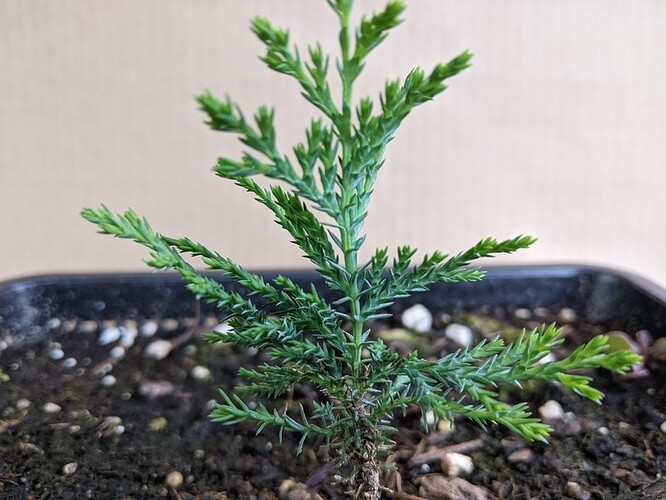This topic came up in the most recent livestream. Ryan was discussing the juvenile growth response and I asked if that was exclusive to junipers or if it showed up on other species. If I recall, the answer was basically “yes, it does”. So I’m here to hopefully learn some more.
I have a couple examples with my own trees, but if anyone can point me to general resources (previous streams, written guides, etc) I’d really appreciate it.
EXAMPLE ONE - Western Redcedar
This is what had me thinking about juvenile growth outside of junipers in the first place. There’s a handful of western redcedar in our neighbors yard, and this year I collected a bunch of the babies that started sprouting underneath them. I noticed that the seedlings have more “spikey” growth.
First image here is the foliage of the parent.
This is one of the children.
The difference reminded me of how junipers work. And, since thuja plicata and junipers are both members of the cupressaceae family, it made sense to me. So I was wondering if mature redcedar could also revert from scales into a more spikey needle form. Obviously I’m not worried about my juveniles having juvenile foliage, I was just curious.
EXAMPLE TWO - Monterey Pine
A very different case. I have a little Monterey Pine that I thought was finished for the year. The candle needled out and hardened off. Then it kind of … kept growing. More needles started elongating out of the top without any sort of bud or candle. More like how fir and spruce grow, or my first-year pine seedlings.
Then the sides started pushing out more needles! I presume this isn’t what’s considered a “second flush”. Is this juvenile growth? Is it a consequence of a resource surplus? I’ve been feeding this kid a lot. I presume this is fine?
Again, any information on the topic would be great!







 Gotta get that thicc trunk. I’ll probably do the first wiring soon.
Gotta get that thicc trunk. I’ll probably do the first wiring soon. Hope springs eternal…
Hope springs eternal… I tried doing the first wiring on it and a week lately it abruptly turned brown. There’s a chance it was weakened from the heat dome or poor soil/watering, but the little fellow seemed to be doing so well … I’ve never felt so bad about losing a tree!
I tried doing the first wiring on it and a week lately it abruptly turned brown. There’s a chance it was weakened from the heat dome or poor soil/watering, but the little fellow seemed to be doing so well … I’ve never felt so bad about losing a tree!